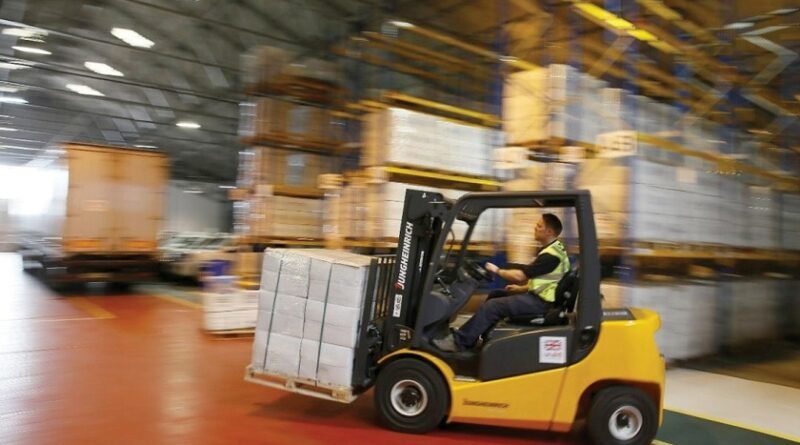Maximizing Forklift Safety: A Comprehensive Guide
Forklift safety is an extremely important aspect of any workplace environment. It is essential to ensure that everyone is aware of the safety protocols and procedures that must be followed when operating a forklift. This introduction will provide an overview of the steps that should be taken to ensure the safe use of a forklift and the potential risks associated with improper use. Additionally, it will provide guidelines for maintaining a safe forklift-operating environment for all workers.
Understanding the Basics of Forklift Safety
Forklift safety is essential to ensure that employees and those around them remain safe while operating a forklift. Proper training is necessary to ensure that operators understand the basics of forklift safety, such as the importance of pre-operation inspections, safe stacking, and loading practices, and the proper use of safety features. It is also important to understand that forklift operators need to wear the proper protective gear and remain alert at all times when operating a forklift. Additionally, it is important to remember that the speed and weight capacity of a forklift should be taken into account when loading materials on it. By understanding the basics of forklift safety, employees can ensure that their workplace is safe for everyone.
Maximize Forklift Safety with the Right Accessories
Maximizing the safety of your forklift is paramount, and the right accessories can help. Consider items such as a siren, strobe light, or even a backup camera to alert pedestrians and other vehicles of the forklift’s presence. Additionally, using a forklift seatbelt can help keep the operator secure in the event of a sudden stop or accident. Finally, add a blue forklift safety light to the forklift that can be used to signal for help in the event of an emergency. By taking the time to add the right safety accessories to your forklift, you can ensure a safe and secure working environment for everyone in your facility.
Establishing Rules and Regulations
The use of forklifts is important to many businesses, and safety should be the top priority. Establishing rules and regulations for forklift safety is essential to maintaining a safe work environment. All operators must be properly trained and certified, and employers must ensure that all forklifts are properly maintained and inspected. Operators must wear the proper safety gear, such as a hard hat, safety goggles, and steel-toed boots when operating a forklift. Additionally, it is important to establish a speed limit, and operators must be aware of their surroundings and any potential hazards. All employees should be aware of the rules and regulations and be held accountable for following them. Proper safety regulations and practices are necessary to ensure the safety of all employees and customers.
Training Employees on Proper Operation
Forklifts are an essential piece of equipment for many businesses, so it is important to ensure that all employees are properly trained in the proper operation of a forklift. Training should include instruction on the proper operation of the lift, including how to properly drive the forklift, how to move and position the forks, how to safely load and unload materials, and how to perform routine inspections and maintenance. Additionally, employees should be trained in safety protocols and how to recognize and respond to potential hazards. Finally, it is important to ensure that all employees have a complete understanding of the operating instructions and safety procedures associated with the forklift. By following this guidance, businesses can ensure that their employees are properly trained and equipped to safely and efficiently use their forklifts.
Proper Maintenance and Inspection
Proper maintenance and inspection of a forklift are essential for its safe and efficient operation. Forklifts should be inspected regularly for signs of wear and tear, oil and fluid levels, battery charge, brakes, and any other necessary components. It is also important to ensure that all safety features, such as seat belts, mirrors, and fire extinguishers, are in good working order. All maintenance should be performed by a certified technician and documented in the forklift’s maintenance log. Additionally, any repairs or replacements should be done as soon as possible to prevent further damage or injury. Finally, operators should always wear the proper safety gear and adhere to all safety protocols while operating a forklift.
Implementing Safety Devices
Implementing safety devices for forklift drivers is essential for minimizing workplace risks. Utilizing instruments like seatbelts, rollover protections, and backup alarms can help reduce the likelihood of accidents. Additionally, adding strobe lights to the forklift can make drivers more visible in dark conditions and help ensure that other workers or pedestrians see them. Other devices like speed limiters and audible warnings can also help to keep drivers from operating their forklifts at unsafe speeds. All of these devices should be regularly maintained and inspected to ensure that they are working properly. By implementing safety devices for forklift drivers, businesses can help to protect their workers and create a safe work environment.
Ensuring a Safe Work Environment
Creating a safe work environment for forklift drivers starts with proper training. All drivers should be properly trained and certified before operating any type of forklift. Additionally, management should ensure that the forklifts are regularly inspected and maintained and that any needed repairs are done promptly. Additionally, management should ensure that all drivers follow the proper safety procedures while operating the forklift, such as wearing seatbelts and following speed limits. Finally, management should make sure that the work area is clearly marked and free of any obstructions that could potentially cause an accident. By taking these steps, management can ensure that the work environment is safe for all forklift drivers.

